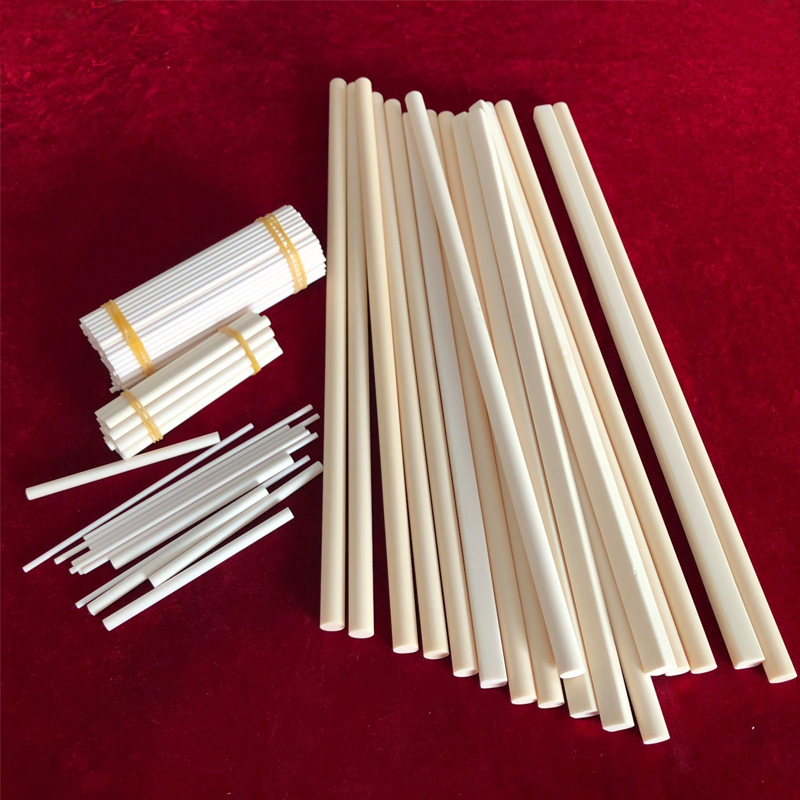Alumina Ceramic Rods/Stick--A Breakthrough in Industrial Applications

In the realm of advanced ceramics, Alumina Ceramic Rods or sticks have emerged as a key player, offering exceptional performance in industries that require high levels of mechanical strength, thermal resistance, and electrical insulation. As the demand for more reliable and efficient materials grows, these rods are gaining significant traction across various sectors, from electronics to high-temperature environments.
Understanding Alumina Ceramic Rods
Alumina, also known as aluminum oxide (Al2O3), is one of the most widely used ceramic materials due to its versatile properties. When shaped into rods or sticks, it can withstand extreme conditions, making it highly valuable for applications requiring durability and longevity.
Alumina Ceramic Rods are typically made from high-purity alumina, ranging from 92% to 99.9%, with varying properties depending on their specific composition. The higher the purity, the more resistant the rods are to wear, corrosion, and thermal shock, all while maintaining impressive electrical insulation properties.
Key Advantages of Alumina Ceramic Rods
1. High Mechanical Strength: Alumina ceramic rods offer exceptional hardness and mechanical strength, outperforming metals in many cases. This strength allows them to be used in demanding applications where they must withstand significant mechanical stress without deformation or failure.
2. Thermal Resistance: Alumina ceramic rods are highly resistant to temperatures up to 1,700°C (3,092°F). This makes them ideal for use in high-temperature environments, such as furnaces, kilns, and heat treatment processes. Additionally, they maintain structural integrity even during rapid temperature changes, preventing cracking or thermal shock.
3. Electrical Insulation: Alumina ceramics are excellent electrical insulators, even at high temperatures. This makes alumina rods invaluable in electrical and electronic applications, where they serve as insulators for electrical components or as part of complex machinery in high-voltage environments.
4. Corrosion and Wear Resistance: Alumina ceramic rods are known for their resistance to chemical attacks and abrasion. This property makes them suitable for use in harsh chemical environments, where they can withstand exposure to corrosive agents that would quickly degrade other materials.
Innovations in Manufacturing Alumina Ceramic Rods
The manufacturing processes for alumina ceramic rods have evolved significantly in recent years, driven by advancements in ceramic processing technologies. Techniques such as isostatic pressing and extrusion molding allow for more uniform and dense ceramic bodies, resulting in rods with superior mechanical properties.
One of the key innovations in the field is the development of high-toughness alumina ceramics, which offer even greater resistance to cracking and wear. This breakthrough has expanded the potential applications of alumina rods, particularly in industries that require components with enhanced toughness, such as aerospace and defense.
Furthermore, improvements in surface finishing techniques have made it possible to produce alumina rods with smoother surfaces, reducing friction in mechanical applications and increasing their lifespan in environments where they are exposed to continuous wear.
Environmental and Economic Considerations
Alumina ceramic rods offer several environmental benefits. Unlike some metals and polymers, they are non-toxic and can be produced with minimal environmental impact. Their long service life also contributes to reduced waste and resource consumption, as they do not need to be replaced as frequently as other materials.
From an economic standpoint, alumina ceramic rods represent a cost-effective solution in many industrial processes. Although their initial cost may be higher than some alternative materials, their durability and performance often lead to long-term savings through reduced maintenance and downtime.
Conclusion
The versatility and exceptional performance of Alumina Ceramic Rods/Stick have made them an indispensable material in a wide range of industries. As technological advancements continue to push the boundaries of what these materials can achieve, the role of alumina ceramics is likely to grow even further.
From high-temperature environments to precision electronics, the unique properties of alumina ceramic rods are setting new standards in industrial materials, offering a durable, reliable, and environmentally friendly solution for some of the most challenging applications. With ongoing innovation in the manufacturing and processing of alumina ceramics, the future looks bright for this powerful material.

